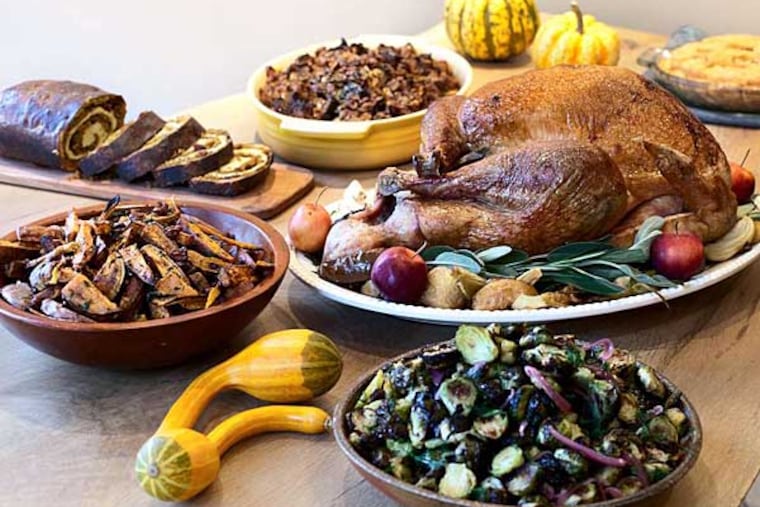Should I wash my turkey? Follow these Thanksgiving food safety tips.
Thanksgiving food safety: wash your hands, not the turkey.

Don’t let foodborne illness ruin your time together with family and friends at Thanksgiving. Whether you’re a kitchen pro or experimenting with cooking for your first holiday meal, follow these tips to keep everyone safe:
Thaw meat properly
In the refrigerator is the safest place to thaw meat, according to the USDA.
Allow one day for every 4 to 5 pounds of meat. For instance, if your turkey weighs 16 pounds, it will take about four days to thaw. Missed the window for a slow fridge thaw? Try submerging the turkey in cold water and changing it every 30 minutes. If you must microwave it, use the defrost setting and cook the turkey immediately.
» READ MORE: Spice containers are the most contaminated surface in your kitchen
Wash your hands
Frequently. It’s important to wash your hands before and after preparing food, as well as between steps of a recipe, if you touch raw meat or other ingredients that could be contaminated with bacteria.
A recent study by Rutgers and North Carolina State University found the germiest kitchen surface was one people probably thought little about — spice containers.
A quick rinse of your hands won’t do. Make sure you scrub the tops of your hands, palms, under fingernails, and between fingers with soap and warm water for about 20 seconds.
» READ MORE: A bite of raw cookie dough led to years of E. coli side effects for this South Philadelphia woman
Don’t wash the turkey
It’s not possible to wash bacteria off raw meat and attempting to can inadvertently spread more germs. Juices that splash can get everywhere in your kitchen — including on you — and tiny droplets may be difficult to clean up entirely.
Use a meat thermometer
An internal temperature of 165 degrees Fahrenheit is the temperature at which turkey is cooked and free of illness-causing bacteria. USDA recommends checking the temperature in the innermost part of the thigh and wing, and the thickest part of the breast.
Clean and sanitize your workspace
Use warm water and soap to scrub down any surfaces that may have been contaminated while cooking.
Use diluted bleach to sanitize counters by wiping them down. The FDA recommends 1 tablespoon of bleach per quart of water. Let the solution sit on the counter for 10 minutes, and consider using paper towels instead of fabric towels to avoid reintroducing bacteria. Launder fabric towels often, with hot water.
Don’t let leftovers sit
Bacteria can begin growing within hours. The Partnership for Food Safety Education, a public health organization in Virginia, recommends packaging warm leftovers in shallow containers, where food will cool more easily. If you must keep food out for an extended period of time, make sure warm dishes remain warm and cold dishes remain cold.